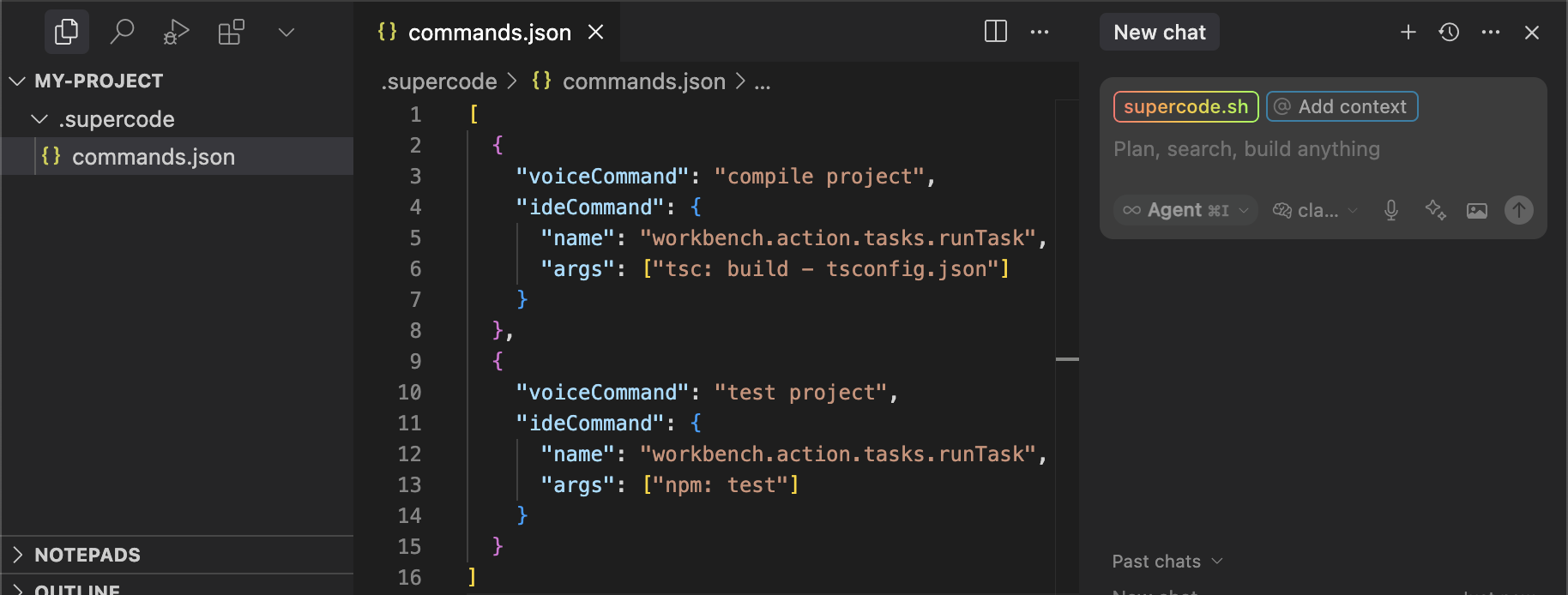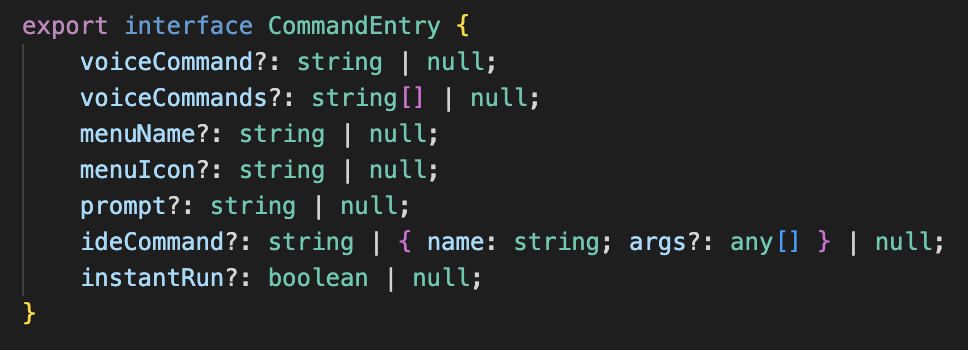Voice Commands
Supercode's Voice Commands feature lets you control your IDE through natural speech commands. By defining a custom commands.json file, you can execute specific IDE actions using voice triggers without touching your keyboard.

Custom Commands Configuration
You can create a .supercode/commands.json file with a structure like this:
[
{
"voiceCommands": ["compile project", "build project"],
"ideCommand": {
"name": "workbench.action.tasks.runTask",
"args": ["tsc: build - tsconfig.json"]
}
},
{
"voiceCommands": ["test project", "run tests"],
"ideCommand": {
"name": "workbench.action.tasks.runTask",
"args": ["npm: test"]
}
}
]Schema for a command entry in .supercode/commands.json:

Important: .supercode/commands.json is used for both voice commands and user-defined prompts. You can even use the same command in both places (via voice and menu elements).
How It Works
When using the "Voice Input" feature, Supercode automatically detects if you've spoken a registered command phrase instead of a prompt.
Important: you don't actually need to speak the EXACT command phrase. Supercode will perfectly recognize slightly different version of the phrase or synonyms.
When detected, it executes the corresponding Cursor (VS Code) task or action.
Key Capabilities
- Execute any Cursor/VS Code task through voice commands
- Run predefined AI prompts using the "prompt" and "instantRun" fields
- Trigger compilation, testing, or deployment workflows hands-free
- Control your development environment remotely
Seamless AI Workflow
Voice Commands create an end-to-end voice-controlled development experience:
- Dictate prompts to generate code with Supercode's AI
- Execute tests, compile code, or deploy your application using voice
- Control your IDE remotely from your smartphone, even when away from your computer
- Essential accessibility feature for developers with mobility limitations

